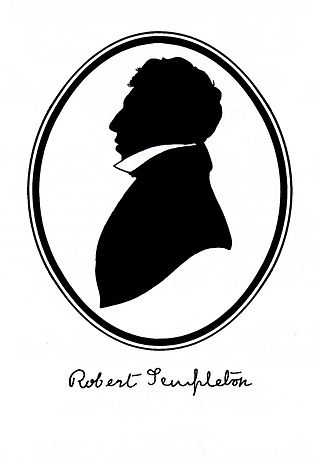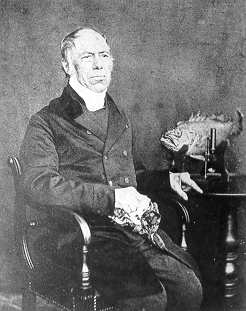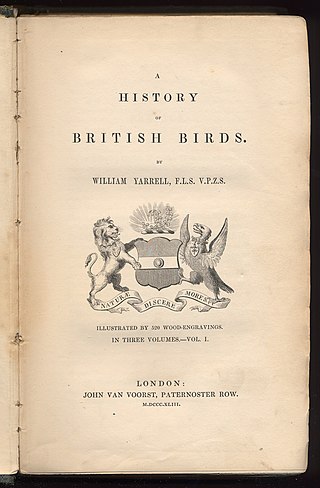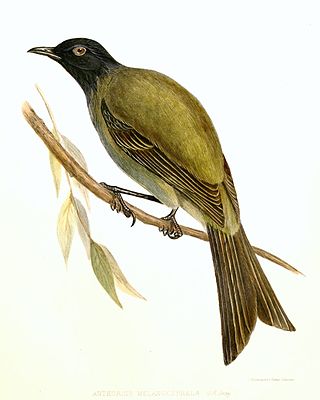
William Yarrell was an English zoologist, prolific writer, bookseller and naturalist admired by his contemporaries for his precise scientific work.

Alexander Henry Haliday was an Irish entomologist. He is primarily known for his work on Hymenoptera, Diptera, and Thysanoptera, but worked on all insect orders and on many aspects of entomology.

Mary Ball (1812–1898) was an Irish naturalist and entomologist most noted for her studies of Odonata and for her discovery of the stridulation in aquatic bugs in the family Corixidae.

Robert Templeton was a naturalist, artist, and entomologist, and was born at Cranmore House, Belfast, Ireland.

William Thompson was an Irish naturalist celebrated for his founding studies of the natural history of Ireland, especially in ornithology and marine biology. Thompson published numerous notes on the distribution, breeding, eggs, habitat, song, plumage, behaviour, nesting and food of birds. These formed the basis of his four-volume The Natural History of Ireland, and were much used by contemporary and later authors such as Francis Orpen Morris.

The Belfast Natural History and Philosophical Society was founded in 1821 to promote the scientific study of animals, plants, fossils, rocks and minerals.

John Templeton (1766–1825) was a pioneering Irish naturalist, sometimes referred to as the "Father of Irish Botany". He was a leading figure in Belfast's late eighteenth-century enlightenment, initially supported the United Irishmen, and figured prominently in the town's scientific and literary societies.

George Crawford Hyndman (1796–1867) was an Irish auctioneer and amateur biologist.

The Zoologist was a monthly natural history magazine established in 1843 by Edward Newman and published in London. Newman acted as editor-in-chief until his death in 1876, when he was succeeded, first by James Edmund Harting (1876–1896), and later by William Lucas Distant (1897–1916).

Jonathan Couch was a British naturalist, the only child of Richard and Philippa Couch, of a family long resident at Polperro, a small fishing village between Looe and Fowey, on the south coast of Cornwall. A blue plaque on the wall of Warren cottage commemorates his birthplace.

Robert Ball was an Irish naturalist. He served as the Director of the Dublin University Museum, and developed a method of dredging known as "Ball's dredge." He served as a secretary to the Royal Zoological Society of Ireland for two decades and was responsible for popularizing natural history through public educational outreach.

Fauna Japonica is a series of monographs on the zoology of Japan. It was the first book written in a European language (French) on the Japanese fauna, and published serially in five volumes between 1833 and 1850.
Thomas Graves was an officer of the Royal Navy and naturalist who worked extensively as a surveyor in the Mediterranean.

A History of British Birds is a natural history book by Thomas Bewick, published in two volumes. Volume 1, Land Birds, appeared in 1797. Volume 2, Water Birds, appeared in 1804. A supplement was published in 1821. The text in Land Birds was written by Ralph Beilby, while Bewick took over the text for the second volume. The book is admired mainly for the beauty and clarity of Bewick's wood-engravings, which are widely considered his finest work, and among the finest in that medium.

William Yarrell's A History of British Birds was first published as a whole in three volumes in 1843, having been serialised, three sheets every two months, over the previous six years. It is not a history of ornithology but a natural history, a handbook or field guide systematically describing every species of bird known to occur in Britain. A separate article of about six pages, containing an image, a description, and an account of worldwide distribution, together with reports of behaviour, is provided for each species.

John Thompson was a British wood-engraver. He is best known for his contribution to William Yarrell's 1843 History of British Birds. He was described as the most distinguished wood-engraver of his time.

The Ornithological Dictionary; or Alphabetical Synopsis of British Birds was written by the English naturalist and army officer George Montagu, and first published by J. White of Fleet Street, London in 1802.
Charles Swainson (1840–1913) M.A. was an English cleric and naturalist. He was rector of High Hurst Wood, Sussex, from 1872 to 1874, from where he published his Handbook of Weather Folk-Lore which also included folklore and mythology relating to elements of nature and a short chapter on birds.

A History of British Fishes is a natural history book by William Yarrell, serialised in nineteen parts from 1835, and then published bound in two volumes in 1836. It is a handbook or field guide systematically describing every type of fish found in the British Isles, with an article for each species.



















